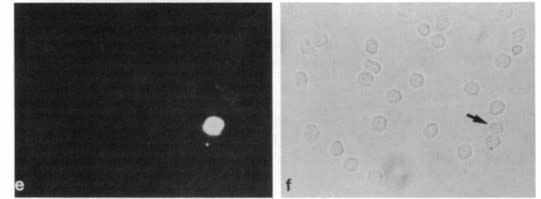Cat. #160540
HGS4 cell line
Cat. #: 160540
Unit size: 1x10^6 cells / vial
Availability: 3-5 days
Organism: Mouse
Tissue: Ovary
Disease: Cancer
Model: Cancer Model
£800.00
This fee is applicable only for non-profit organisations. If you are a for-profit organisation or a researcher working on commercially-sponsored academic research, you will need to contact our licensing team for a commercial use license.
Contributor
Inventor: Frances Balkwill
Institute: Queen Mary University of London
Tool Details
*FOR RESEARCH USE ONLY
- Name: HGS4 cell line
- Alternate name: ovarian cancer, tumor microenvironment, matrisome, serous, mouse model
- Organism: Mouse
- Tissue: Ovary
- Disease: Cancer
- Model: Cancer Model
- Conditional: Yes
- Description: Human tumours comprise a complex mixture of malignant cells, immune, and other stromal cells regulated by a dynamic network of soluble mediators and adhesion molecules. All of these components interact in an abnormal extracellular matrix (ECM), often referred to as the tumour matrisome (Socovich and Naba, 2018). Not only is this tumour microenvironment (TME) critical for the growth and spread of human cancers but also the non-malignant components are important targets for immunological and other biological therapies (Binnewies et al., 2018, Foster et al., 2018, Mantovani et al., 2017). However, it is not clear whether TMEs of murine cancer models sufficiently replicate their human counterparts. Differences between the human and mouse TMEs may compromise pre-clinical studies of novel immune and other biological therapies and their successful translation to clinical trials. Many murine cancer models may not have appropriate oncogenic mutations and may be grown in immunocompromised animals or in unsuitable anatomical sites; others grow too rapidly for a TME to develop fully or too slowly for pre-clinical studies to be feasible. It has been demonstrated that many of the biomechanical, cellular, and molecular features of human HGSOC are replicated in these murine tumours with significant correlations in mRNA expression profiles, innate and adaptive immune responses, tissue modulus, and matrisome components (Maniati et al 2020). Further highlighting the utility of these models as avatars of human disease, the mouse models exhibit significant differences and distinct vulnerabilities in their TMEs, reflecting the heterogeneity of human HGSOC biopsies. Using this model platform, proof-of-concept studies were conducted demonstrating the potential of this repertoire of models for pre-clinical studies and found that the transcriptional profile of chemotherapy-responsive murine tumours translates to patients, suggesting that these mouse models could help identify sub-groups of patients who would most benefit from a specific treatment (Maniati et al 2020).
- Application: Identification patient subgroups that are likely to respond to specific therapies
- Production details: Murine cell lines: HGS lines were derived from individual tumors collected in cold PBS, minced with a scalpel, and incubated with 1 mg/ml collagenase type I (Fisher, 17018-029). After being split once onto collagen-coated plates, cells were transferred into Primaria flasks (Corning) and then propagated as polyclonal lines on normal cell-culture plastic (Corning). Complete medium was DMEM:F12 1:1 with GlutaMax (GIBCO) with the addition of 4% FBS (Hyclone), 1x Pen/Strep (Invitrogen), 1x insulin/transferrin/selenium (Invitrogen, 51300), 100 ng/ml hydrocortisone (Sigma, H0135), 20 ng/ml murine Epidermal Growth Factor (EGF, Sigma, E4127), 1x antibiotic-antimycotic (GIBCO). Cells were trypsinized with 0.05% trypsin-EDTA (GIBCO). 60577 and 30200 cell lines were derived and cultured as described (Szabova et al., 2014).Orthotopic tumor growth: Cell lines were trypsinized, washed in medium, and resuspended in PBS to 10x106 cells in 300 μl injected i.p. into 8-week old FVB mice (60577, 30200) or 6-7-week old C57BL/6J mice (HGS1-4) from Charles River, UK. Mice were treated with 2 mg/kg anti-IL-6 or isotype control (BioXCell) twice weekly i.p., starting three weeks (60577 model), ten weeks (30200 model) or seven weeks (HGS2 model) after cell injection, until the end of the experiment. Carboplatin (20 mg/kg) was administered i.p. once a week for three weeks starting at week 3 (60577 model), or week 8 (HGS2 model).
- Biosafety level: 1
Target Details
- Target: Ovarian Cancer cell line
Applications
- Application: Identification patient subgroups that are likely to respond to specific therapies
Handling
- Format: Frozen
- Unit size: 1x10^6 cells / vial
- Shipping conditions: Dry ice
- Storage conditions: Liquid Nitrogen
- Mycoplasma free: Yes
References
- Maniati et al. 2020. Cell Rep. 30(2):525-540.e7. PMID: 31940494.





